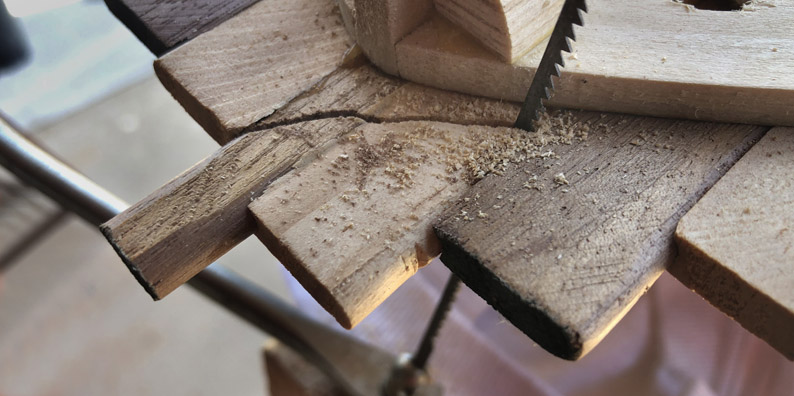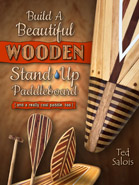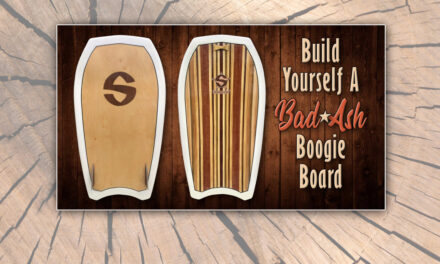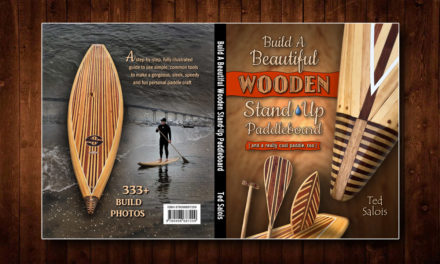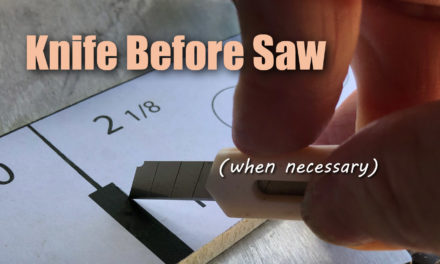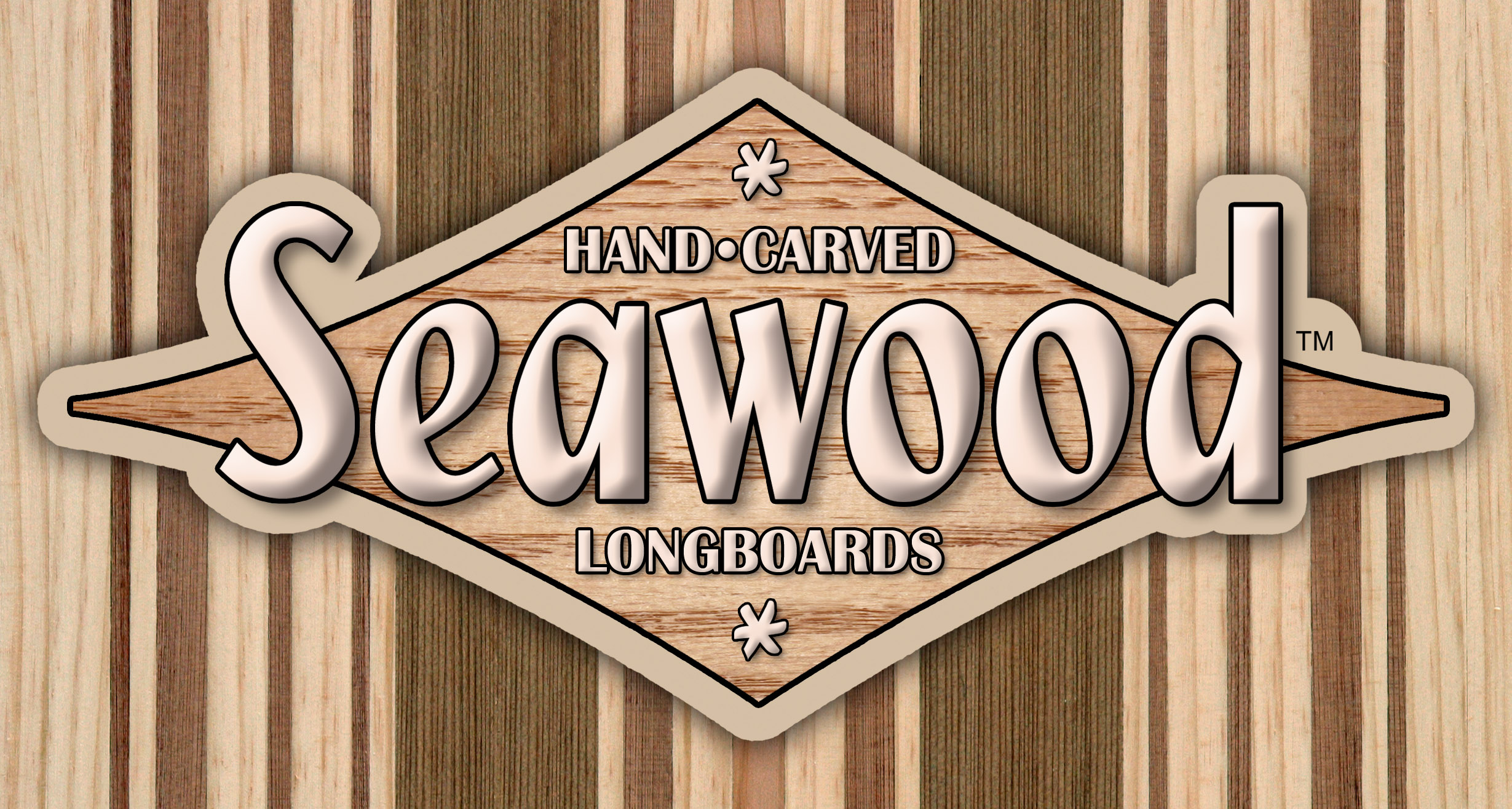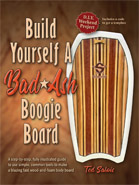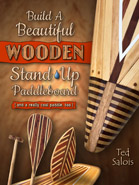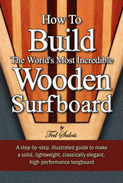Neatness really does count when you want a beautiful project
After covering the deck or bottom (both actually) with gorgeous, colorful wooden strips, you will need to trim off what hangs beyond the frame. While this is not a difficult task, there are some steps that should be taken to ensure a clean edge results and the shape is smooth and eye-pleasing.
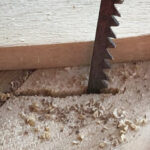
As described in the book, “How To Build The World’s Most Incredible Wooden Surfboard” a coping saw will allow you to follow the curved perimeter strip lying beneath the combined deck or bottom strips. The coping saw, unlike other saws, will allow a turning of the handle to change the angle of the blade. That will keep the saw frame from running into the perimeter strip and blocking progress.
An extremely important consideration–the entire basis of this tech tip–is to leave a bit of overhang when using the coping saw. DO NOT GO RIGHT UP TO THE PERIMETER STRIP’S EDGE. A quarter-inch or so buffer will be especially beneficial.
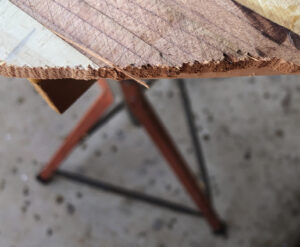
The wood used for the strips of the deck or bottom are soft. The back and forth action of the coping saw is aggressive and will cause some tear out–a frayed edge on the strips. If the sawed edge is up against the perimeter strip, tear out will cross over to the deck or bottom. Although such a rough edge would not be catastrophic or destroy the entire project, repair work to try to cover such blemishes might be obvious and infuriate the builder. Ripping out chunks of timber should be avoided.
This information is provided in the book, of course, but it definitely is worth a reminder.
The last part of the event is accomplished with a belt sander and a rough (40) grit paper. That will grind down the quarter-inch space left beyond the perimeter strip. It also can be used to perform a small amount of shaping, if the outline of the board is a little off because of slight variations at the ends of the ribs where they bond with the perimeter strip.
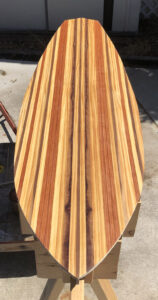
If you left more than a quarter-inch overhang after sawing, you will have lots of extra work in grinding to the edge. Yes, the deck and bottom strips are soft. But they aren’t butter and will require time and plenty of pressure behind the belt sander.
Be careful if you need to alter the outer line. The perimeter strip is fairly narrow and it should retain continuous structural integrity.
—###—
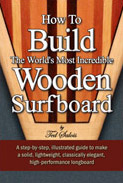
Complete details on the wooden surfboard building process can be found in the book, How To Build The World’s Most Incredible Wooden Surfboard. The 170-page, fully illustrated guide is available in print and digital (Kindle eBook) formats.
.
.
See also: Build A Beautiful Wooden Stand-Up Paddleboard (and a really cool paddle, too), a 216-page book of detailed instructions, and download a template with three fin designs included. The template is a direct companion to the illustrated guide.

